
Let me start with a truth bomb: keto food can get boring fast if you’re not careful. When you’re cutting out bread, pasta, potatoes, and all those sneaky carb-loaded sauces, what’s left? Meat, cheese, eggs, some veggies. Rinse and repeat. But here’s the game-changer: cooking with herbs.
Herbs are the unsung heroes of low-carb and keto cooking. They add color, aroma, complexity, and straight-up joy to otherwise basic meals. Best part? Most herbs have next to no carbs. You can use them freely without getting kicked out of ketosis.
In this first post of my herb-focused keto series, I’m going to break down why herbs matter so much, how to use them smartly, and which ones deserve a permanent spot in your kitchen. By the end, you’ll be tossing basil on your eggs and feeling like a gourmet chef.
Why Herbs Are Essential on Keto
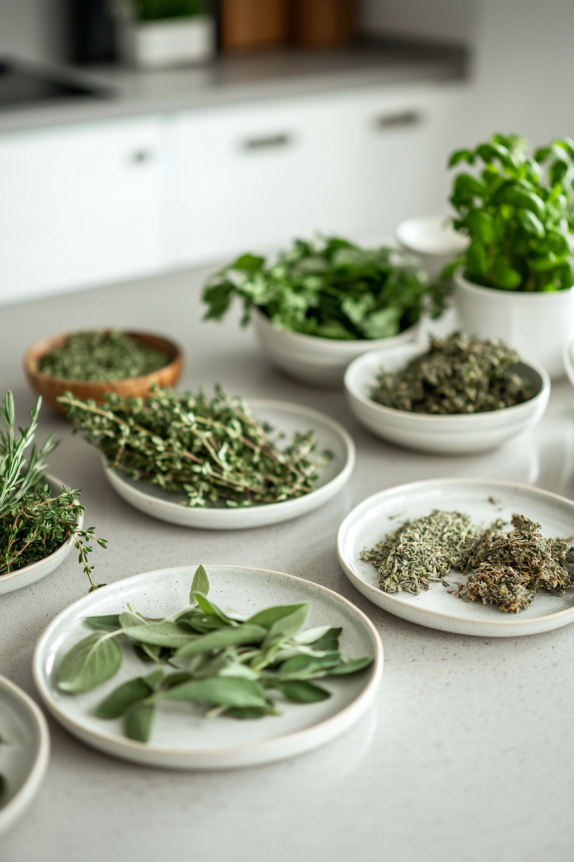
First off, flavor. When you can’t rely on sugary sauces, breadcrumbs, or even certain condiments, herbs step in to keep your food from being a total snoozefest.
Second, variety. Herbs can transform the same ingredients into totally different dishes. Chicken with rosemary tastes nothing like chicken with cilantro, even if everything else is the same.
Third, nutrition. While you’re not exactly eating herbs by the cupful (unless you’re into green smoothies with a wild side), they do bring micronutrients and antioxidants to the party.
Here’s what herbs bring to the table:
| Herb | Flavor Profile | Health Perks |
|---|---|---|
| Basil | Sweet, peppery | Anti-inflammatory, rich in antioxidants |
| Rosemary | Piney, earthy | May support brain health, antimicrobial |
| Oregano | Bold, slightly bitter | High in antioxidants, antibacterial |
| Parsley | Fresh, grassy | Vitamin K, supports bone health |
| Cilantro | Bright, citrusy | Aids digestion, may help detox heavy metals |
| Dill | Tangy, slightly sweet | Good for digestion, calming effect |
Fresh vs. Dried Herbs
It’s a huge debate, so…let’s settle this: both have their place.
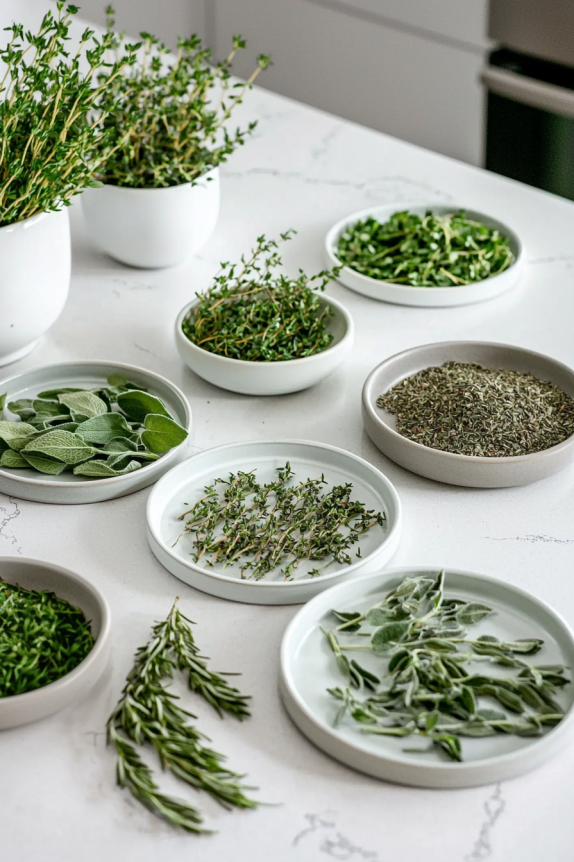
Fresh herbs:
- Great for garnishing and adding at the end of cooking.
- Offer vibrant color and more delicate flavor.
- Need to be used quickly before they wilt or turn into a green mush in your fridge.
Dried herbs:
- Last way longer and are pantry-friendly.
- Ideal for long cooking (think soups, stews, roasts).
- More concentrated flavor, so you use less.
Quick Tip:
When substituting dried for fresh, use about 1/3 of the amount. So if a recipe calls for 1 tablespoon of fresh oregano, use 1 teaspoon dried.
When to Add Herbs During Cooking
Timing makes a difference. Add herbs too early and they might lose their flavor. Add them too late and they might taste raw or overpowering.
Here’s a general rule of thumb:
| Type | When to Add |
| Dried herbs | Early in cooking, so they can soften and release flavor |
| Fresh hardy herbs (rosemary, thyme) | Early or mid-cooking |
| Fresh delicate herbs (basil, parsley, cilantro) | At the end or after cooking |
Herb Pairing Cheat Sheet
Let’s say you’re standing in your kitchen staring at a pack of chicken thighs. What herb do you reach for?
Here’s a quick pairing guide to make life easier:
| Protein/Vegetable | Best Herbs |
| Chicken | Rosemary, thyme, tarragon, parsley |
| Beef | Oregano, thyme, rosemary, sage |
| Pork | Sage, fennel, rosemary, thyme |
| Eggs | Chives, dill, tarragon, basil |
| Fish | Dill, parsley, tarragon, chives |
| Zucchini | Basil, oregano, thyme |
| Cauliflower | Cumin, curry leaves, parsley |
| Mushrooms | Thyme, sage, oregano |
Are Herbs Really Low Carb?
Short answer: yes.
Longer answer: While most herbs do contain trace amounts of carbs, the quantities we use in cooking are so small that the carb count is practically negligible.
For example:
- 1 tablespoon of fresh basil: ~0.1g net carbs
- 1 tablespoon of dried oregano: ~0.6g net carbs
- 1 tablespoon of chopped parsley: ~0.3g net carbs
Even if you use a generous hand, it won’t break your macros.
Don’t Forget About Herb-Infused Oils and Butters
One of my favorite ways to add herb flavor without effort is to make herb-infused oils or compound butters. They’re keto gold: fat + flavor.
Herb Butter (a.k.a. Compound Butter)
Mix softened butter with chopped herbs (try garlic + parsley or dill + lemon zest) and refrigerate in a log. Slice off pieces to melt over steak, veggies, or eggs.
Herb-Infused Oil
Gently heat olive oil with herbs like rosemary, thyme, or chili flakes. Cool, strain, and drizzle over everything.
Using herbs is one of the easiest ways to level up your keto meals. They make food taste like food again. If you’ve been stuck in a rut of bland proteins and steamed veggies, herbs are your ticket out.
Herbs vs. Spices: What’s the Difference, and Does It Matter?
I used to toss around “herbs” and “spices” like they were interchangeable. But understanding the difference helps you make better choices in the kitchen.
- Herbs come from the leafy green parts of plants (think basil, parsley, cilantro).
- Spices come from seeds, bark, roots, or fruit (think cumin, cinnamon, turmeric).
On keto, both are useful—but herbs are often the secret to that fresh, bright finish. Spices tend to add warmth and depth. Combine the two and boom: flavor explosion.
For example:
- Chicken thighs + thyme (herb) + paprika (spice) = savory and smoky.
- Cauliflower rice + cilantro (herb) + cumin (spice) = fresh and earthy, taco-night ready.
How to Store Herbs Without Losing Your Mind
We’ve all bought a bunch of herbs with good intentions… only to find them a soggy mess three days later. Here’s how to stop that tragedy.
For fresh herbs:
- Hard herbs (like rosemary, thyme): Wrap loosely in a paper towel and store in a zip-top bag in the fridge.
- Soft herbs (like parsley, cilantro, basil): Trim stems, place in a glass of water like a bouquet, cover loosely with a plastic bag, and refrigerate—except basil, which prefers room temp.
Bonus hack: If your herbs are starting to wilt, chop them and freeze in olive oil in an ice cube tray. Instant flavor bombs.
For dried herbs:
- Store in a cool, dark place away from the stove.
- Replace every 6–12 months for best flavor (if it smells like dust, it probably tastes like it too).
A Note on Organic vs. Conventional Herbs

I get this question a lot: do herbs have to be organic?
Short answer: not necessarily. But if you’re eating a lot of herbs raw (like in salads, pesto, or chimichurri), organic can help you avoid pesticide residue.
If budget is a concern, prioritize organic for soft, thin-skinned herbs like parsley and cilantro. Hardy herbs like rosemary or thyme are less likely to absorb sprays.
Either way, rinse well before using and pat dry.
Flavor Layering: How to Build Depth with Herbs
One of the best things herbs teach you is how to layer flavor. Here’s how I think about it:
- Start with a base – sauté garlic and onions (or shallots) in olive oil.
- Add dried herbs early – toss in some thyme or oregano to bloom in the fat.
- Midway through cooking – if using meats, you can throw in heartier fresh herbs like rosemary or sage.
- Finish with fresh herbs – sprinkle parsley, dill, or cilantro just before serving for a bright, fresh hit.
This way, your dish doesn’t just have flavor—it builds flavor.
Common Mistakes to Avoid
Alright, herb-lover-in-training, here are a few traps to dodge:
- Using too much dried herb: Remember, dried herbs are potent. Go easy, taste often.
- Adding delicate herbs too early: Basil and cilantro lose their zing if cooked too long.
- Neglecting seasoning: Herbs amplify flavor—they don’t replace salt. Don’t forget the salt.
- Not tasting as you go: Your taste buds are your best kitchen tool. Use them.
Here’s Some Quick Keto Recipes Where The Herbs Shine
Need inspo? These are go-tos in my kitchen when I want something fast but flavorful:
1. Lemon-Herb Grilled Chicken Thighs
- Olive oil, lemon juice, garlic, chopped rosemary and thyme.
- Marinate, grill, done.
2. Cilantro-Lime Cauliflower Rice
- Sauté riced cauliflower in avocado oil, stir in chopped cilantro and lime juice right before serving.
3. Zucchini Noodles with Basil Pesto
- Classic pesto (basil, garlic, pine nuts, parmesan, olive oil), tossed with zoodles. No regrets.
4. Herby Egg Muffins
- Whisk eggs with chopped parsley, dill, and chives. Pour into muffin tins and bake. Meal prep win.
Final Word (for Real This Time)
Herbs might not seem exciting on the surface, but they’re your secret weapon on keto. They make food taste better, feel fresher, and look more alive—without costing you a single carb that counts.
The best part? Once you get the hang of them, you’ll start thinking in herbs. You won’t just “make chicken.” You’ll make chicken with thyme and lemon zest, or cilantro-lime grilled chicken skewers, or rosemary garlic pan-roasted thighs. Same ingredients, totally different vibes.
Next up in this series: a deep dive into the top keto-friendly herbs you’ll want to keep stocked all the time. Think of it as building your keto herb toolkit.
Until then, go green. In the best way possible.
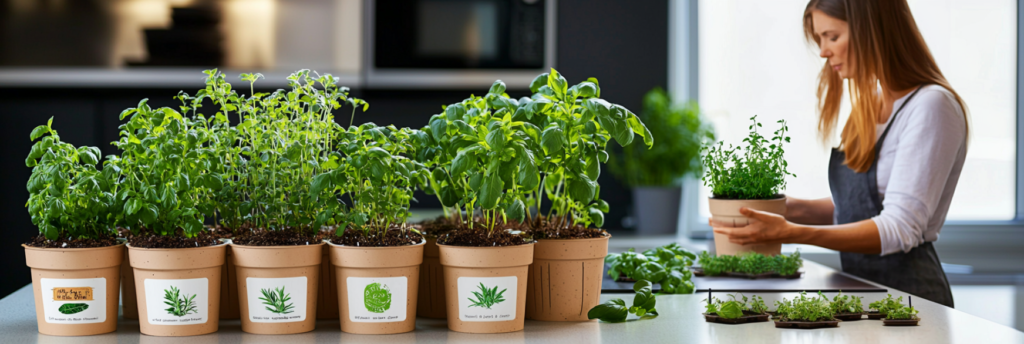




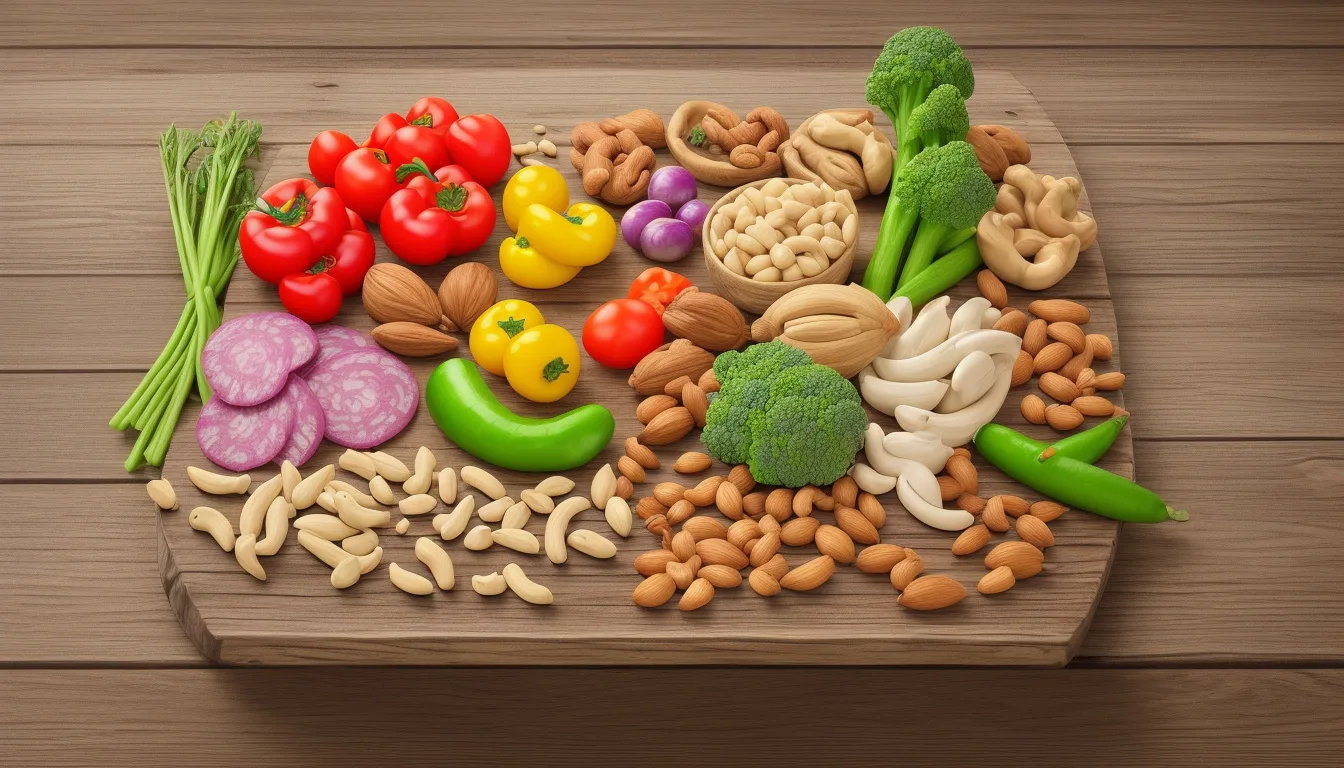
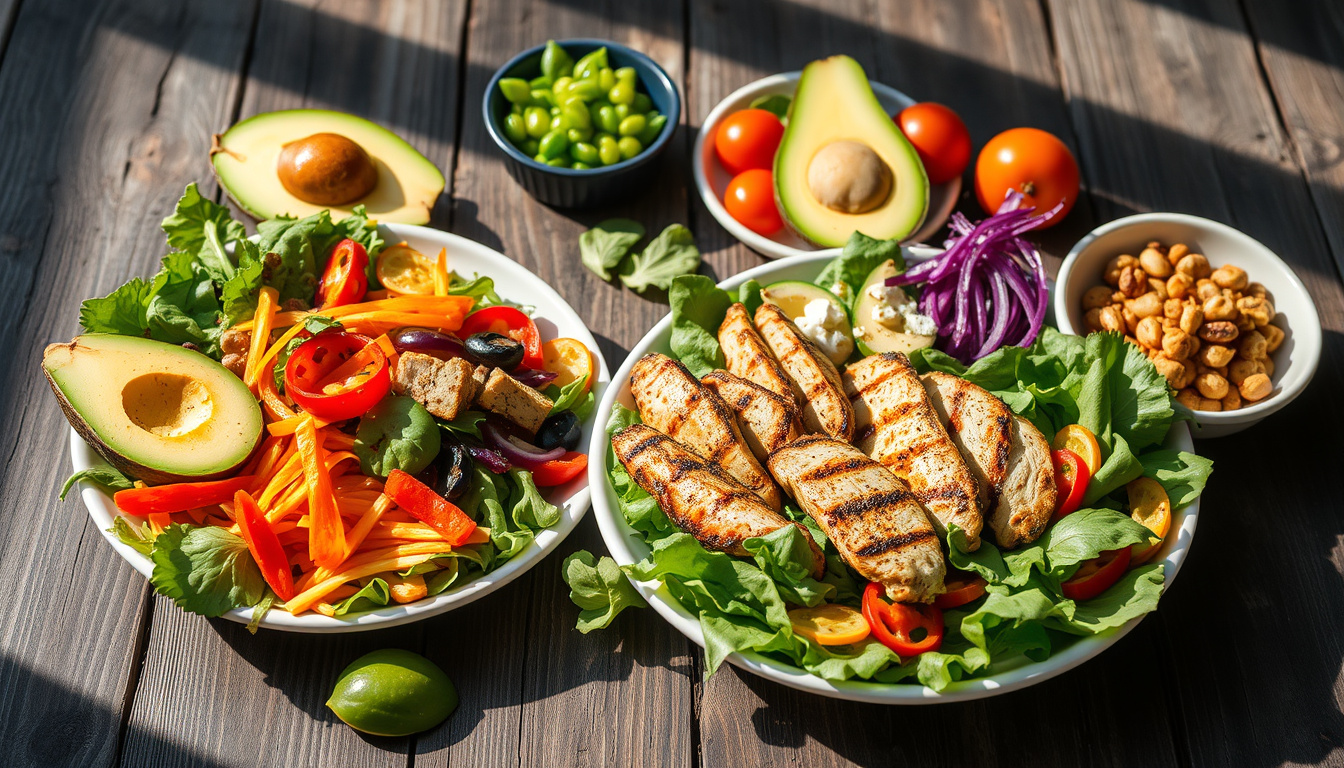
2 thoughts on “Cooking with Herbs on Keto: Flavor Without the Carbs”